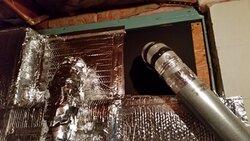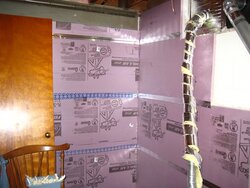We currently have a unfinished basement and are looking at getting a pellet stove to heat it. We use a forced air propane furnace to heat the rest of the house and plan to continue doing so.
I have a few questions about the pellet stove however. We are looking to just heat the basement, and possibly dry out the area. Will a wood pellet stove take the dampness out, there is no standing water just damp? How should we go about venting, it is a 12 block basement with only 2 block exposed. Is it possible to vent out a small basement window?
I have a few questions about the pellet stove however. We are looking to just heat the basement, and possibly dry out the area. Will a wood pellet stove take the dampness out, there is no standing water just damp? How should we go about venting, it is a 12 block basement with only 2 block exposed. Is it possible to vent out a small basement window?
Last edited:



